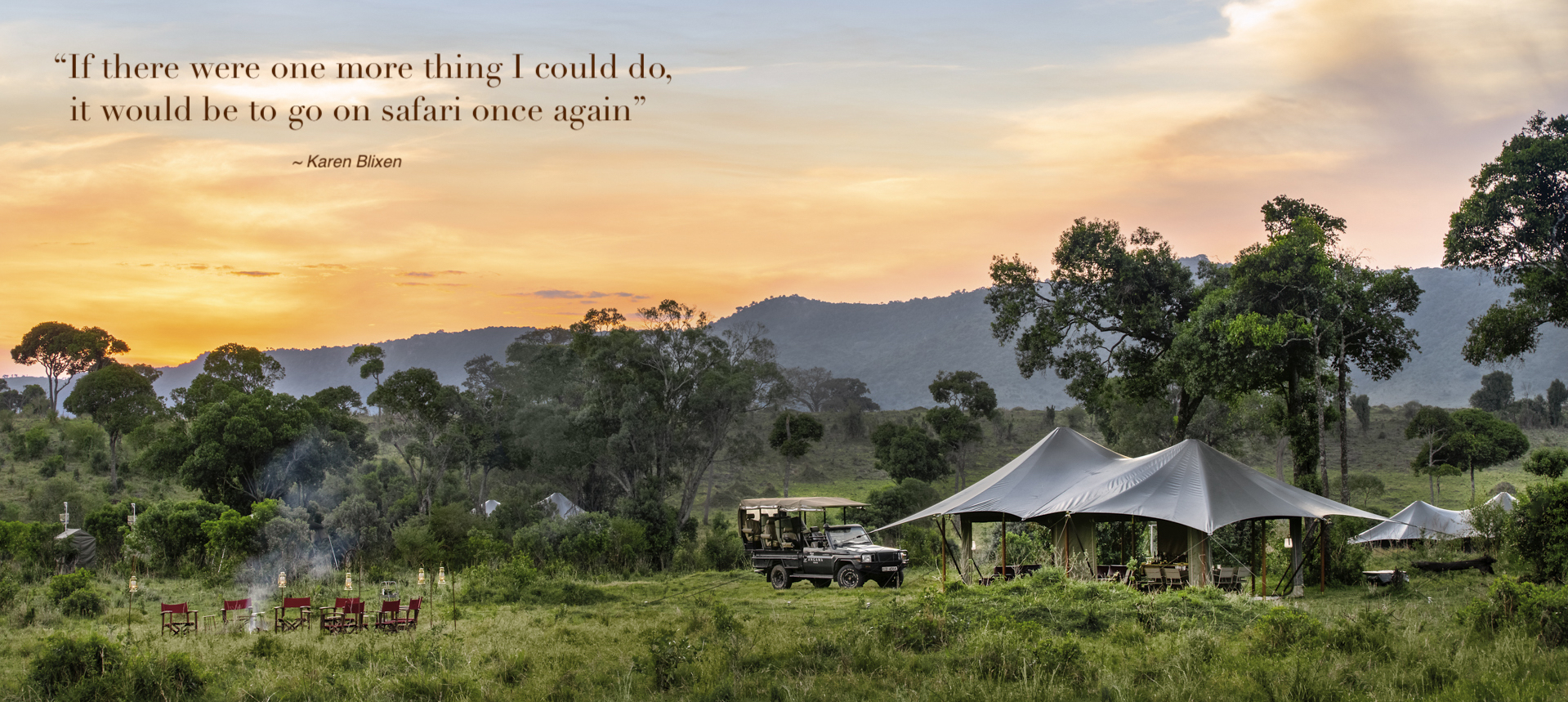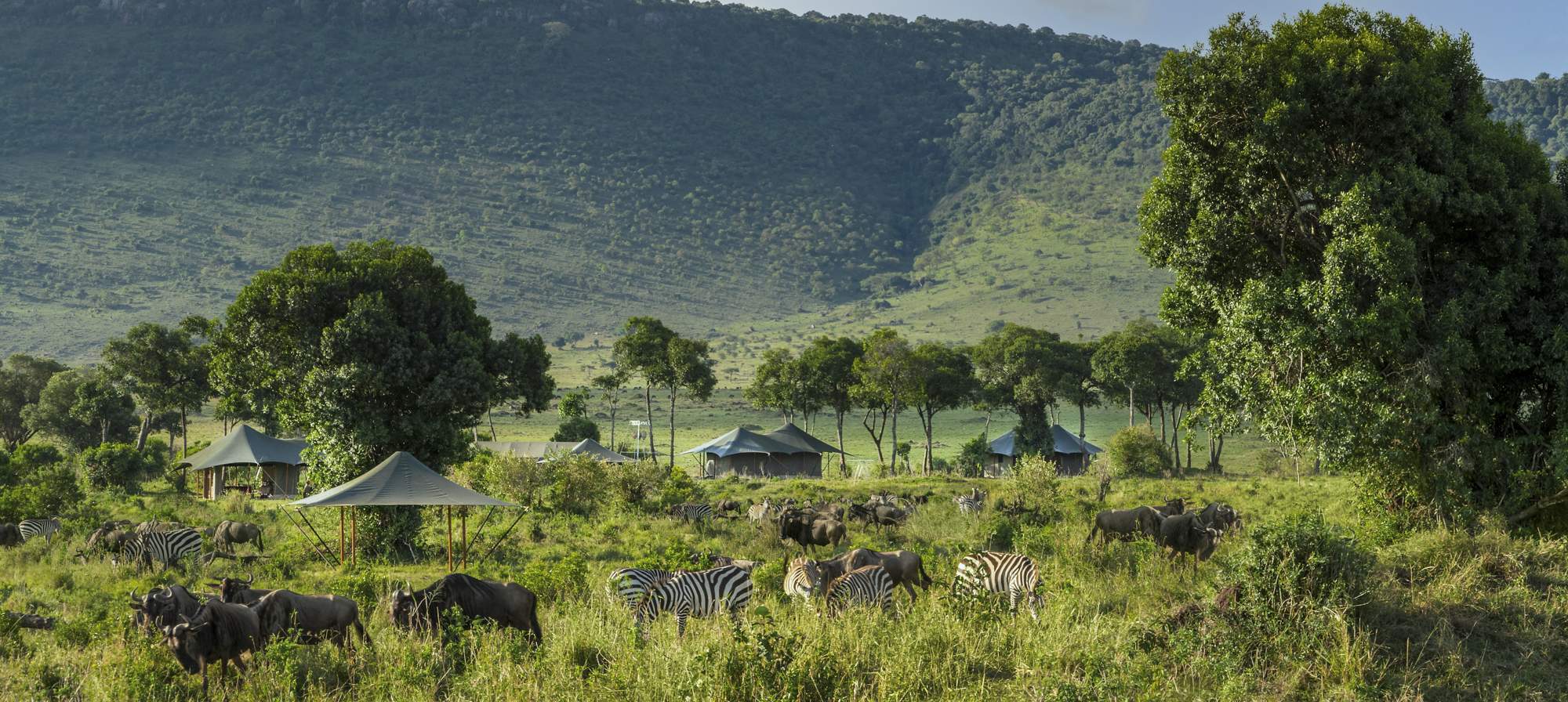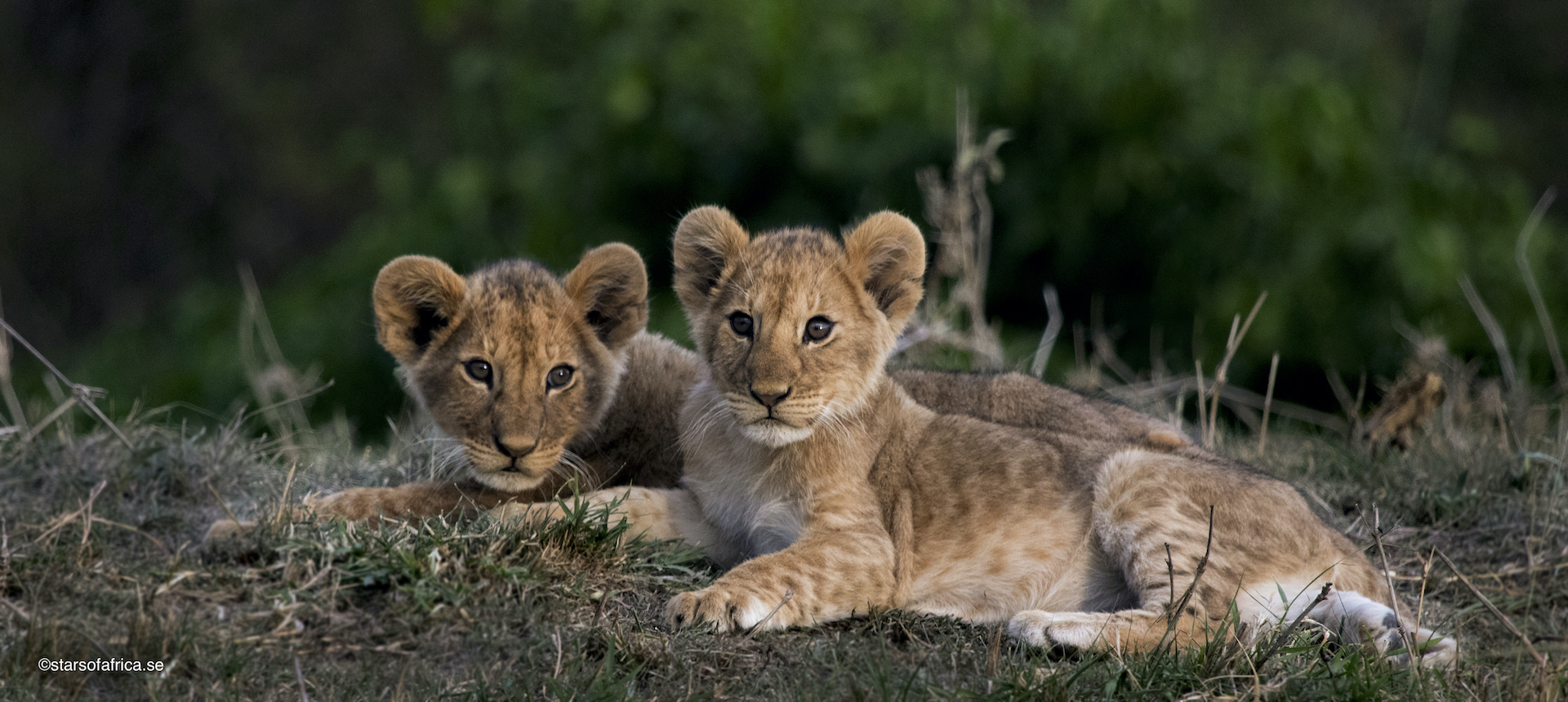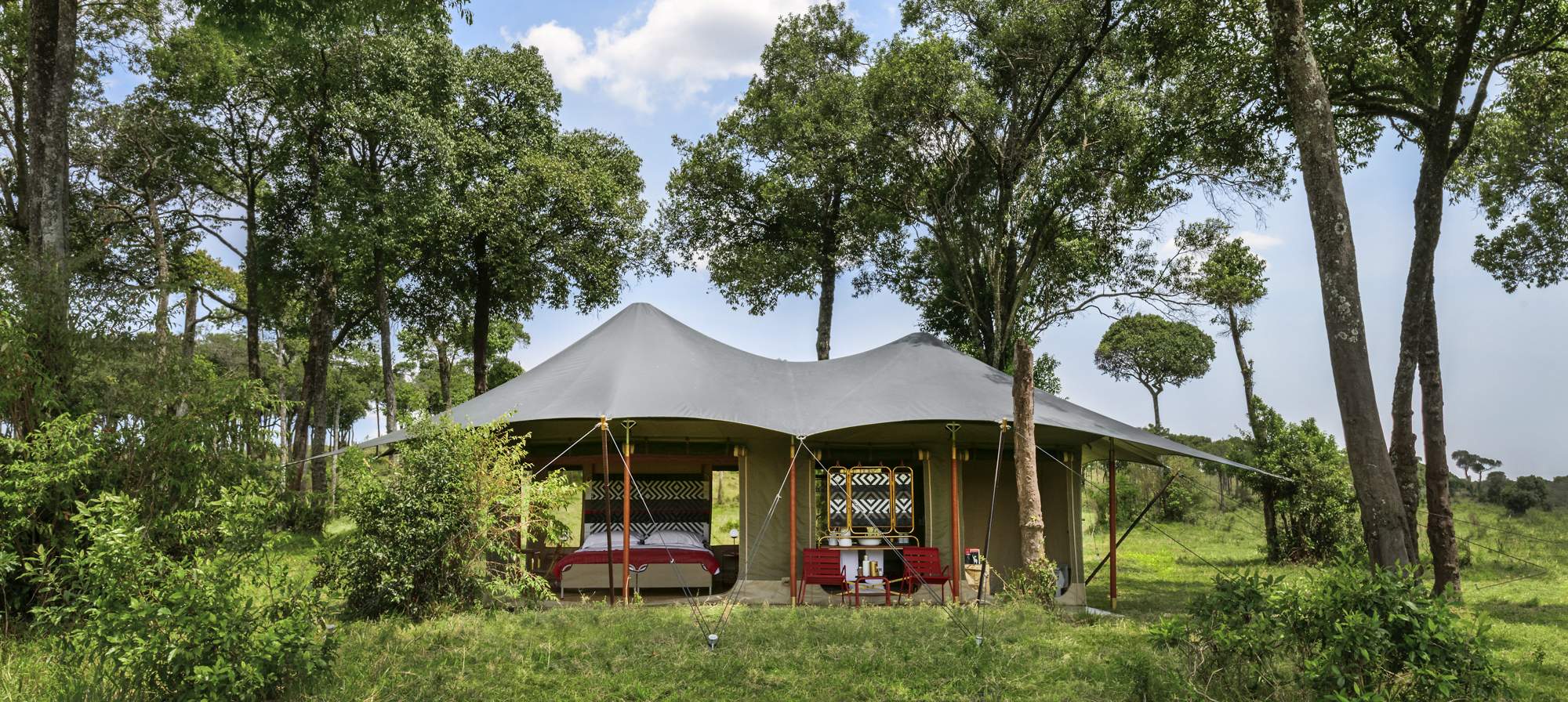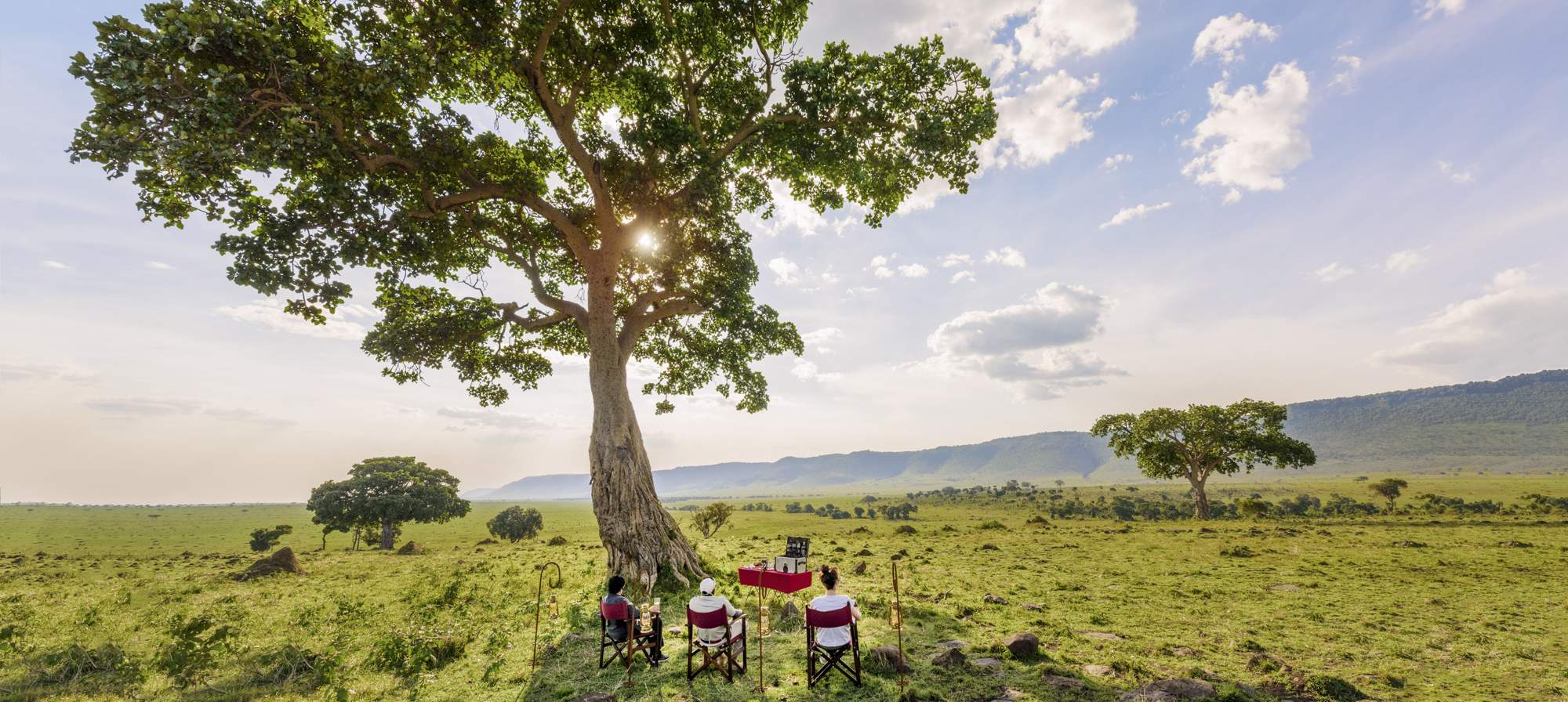ANGAMA SAFARI CAMP
ON THE WILD SIDE – THE SOPHISTICATION OF SIMPLICITY
![]()
Angama Safari Camp offers the perfect opportunity to unwind and revitalize oneself in the most beautiful setting, adventure by day and romance by night.
The design team that made Angama Mara a standout in look and feel have now introduced their latest addition to the family, Angama Safari Camp. Set in a remote wilderness area in the south-western corner of the Mara Triangle, it offers the same guiding excellence, same unparalleled game viewing, same warm Kenyan hospitality, same maverick approach to design, same delicious food, same sublime comfort but this time truly in the middle of nowhere. A mobile safari camp providing you with a safari experience that distils the sophistication of simplicity right down to its very essence.
Angama Safari Camp captures the romance, privacy, unconstrained freedom and adventure of the glorious Golden Age of safaris, yet with a lightness of spirit that will both surprise and delight. Expect extraordinary wildlife experiences right on your doorstep, the camp being surrounded by abundant resident wildlife – and during the Migration Season, you will be right in the heart of the action, surrounded by the mega herds.
This camp is open year around.
ACCOMMODATION
This unique sole-use mobile tented Safari Camp accommodates eight guests in four tents. The design, quite unlike any other mobile tented camp, fresh and uncluttered, making for easy living. Each tent featuring King sized bed, separate w/c and double bucket showers.
Mobile safari camps have been in existence since that famous Denys Finch Hatton safari with the royal princes nearly 100 years ago and 40 years before the first lodge was ever built. There will be no crystal chandeliers or Persian rugs, the brass items will add glamour to the honest simplicity of the camp. The look is a combination of respect for the past and the vision to make it relevant to the present that will set it apart from others.
You can look forward to the same charming, warm service that delights guests at Angama Mara when staying at Angama Mara Safari Camp, with the same experienced team looking after every aspect of your stay. You will have your own dedicated camp host, chef and a team of butlers, kitchen staff and askaris to ensure every detail is taken care of.
Dining
Meals are prepared using the freshest ingredients with the menu tailored around what you love to eat. Whether it’s an individually packed picnic under a tree somewhere in the middle of the Mara, or bitings shared around the campfire as the chef cooks dinner over the coals – the food will always be good, but never fancy. Freshly baked bread, fire-roasted meat and vegetables. Kenyan cocktails and plenty of delicious surprises delivered with the warmest Kenyan smiles.
ACTIVITIES
With a dedicated safari vehicle and guide, each day’s program is entirely up to you, this camp is all about flexibility and what you wish to do, creating the most personal experiences. You will find yourself in the middle of the Mara’s plethora of wildlife. Walking Safari are available, depending on location of the camp.
In the evenings, watch the sun set, gaze at the fire, share stories around the camp fire, relax in the red rocker, enjoy dinners lit only by starlight, breathe the fresh air and count the Stars of Africa.
WILDLIFE
The Mara Triangle is home to massive numbers of resident wildlife as well as the annual Great Migration, when more than two million wildebeest, zebras, topis and Thomson gazelles move in search of prime grazing land. The Mara River is famous for its huge crocodiles lying in wait for the crossing animals. Lions, hyenas, as well as the more elusive cheetah and leopard also follow the vast migrating herds. The Mara hosts a large elephant population, massive hippos, buffaloes, giraffes, lions, cheetahs, leopards, servals and a number of antelope species. The endangered black rhino can be found in the dense bush, and, on occasion, the rare African wild dog can also be seen.
Though seldom the main attraction, birds play an essential role for the safari experience. While Africa’s famous mega fauna is what most guests come to see, the reality is that for every sighting of these majestic mammals, there is an equally interesting avian observation to be noted. At every lion kill there will be vultures noisily posturing nearby, for every heard of buffalo there will be several buffalos carrying busy oxpeckers on their backs, watch the elephants slowly walking across the savanna and one will soon see lilac-breasted rollers chasing disturbed insects. There are 470 different species of birds recorded in the Maasai Mara, they are well worth some attention.
PHOTOGRAPHY
The Maasai Mara is a photographer’s dream. There is probably no other place on Earth where one can see this vast array of wildlife in one place – the sheer biomass is staggering, all year round. At Angama Safari Camp you will be very close to the world-renowned Great Migration river crossings.
The photographic opportunities are exceptional with wide-open plains, the iconic Acacia trees and countless wildlife to photograph. This area hosts over 95 species of mammals and 470 recorded species of birds. Offering some of the best predator photographic opportunities in Africa, all three of Africa’s big cats are regularly seen here, and often with their cubs providing exceptional predator photography opportunities. The area is also famous for the Maasai people, a tribe well known for their distinctive customs and dress.
Birds are always a big part of the Mara experience, as well. The brilliance of lilac-breasted rollers and saddle-billed storks, the regal demeanor of the hawks and eagles, and the excitement of a squabbling throng of vultures on a carcass.
The rolling landscape, savannah woodlands and rich riparian habitats provide a dramatic background for photography. Not to forget, the sunrises and sunsets that the Mara is famous for providing exceptional opportunities for silhouette photography. There is no fence between the Mara and Angama, which offers the perfect opportunity for guests to photograph giraffes right on the property against a stunning backdrop.
And then, there is the Great migration. Immortalized by countless wildlife films, it needs little introduction. Seeing the migration crossing the River Mara is as iconic as it gets. The Maasai Mara is without a doubt one of the best wildlife photography destinations in the world and during migration season there are few photographers who will not be moved by the experience. Being a natural event, the migration changes year to year in both timing and location, it is a timeless circular trek across the face of East Africa following the pattern of the rains. Each year around two million wildebeest and 250,000 zebras along with other antelope gather up their young and start their long trek from Tanzania’s Serengeti Plains, further north to Kenya’s Maasai Mara. The animals cover a distance of around 2,900 kilometers, 1,800 miles. It’s a difficult journey, and every year an estimated 250,000 wildebeest won’t make it. Generally, the herds start arriving to the Mara by late July, the Mara crossings usually takes place July to August, a dramatic interplay between the wildebeests, the zebras and the resident gigantic Nile crocodiles. Come September, the huge mass of animals has arrived in the green and pleasant Maasai Mara presenting breathtaking sceneries. By November the migration starts moving south in anticipation of the new season’s rains.
It is seasonal rains and the availability of grazing that determines the movement, although the timing is extremely unpredictable. In reality, the Migration is not a continually forward motion. The giant herds go forward, back and to the sides, they mill around, they split up, they join forces, they walk in a line, they spread out, they hang around.
Angama Safari Camp’s guides can never predict with certainty where animals will be or when the Great Migration will make its appearance; the best anyone can do is to suggest likely timings, based on past experience. But as mentioned, the Maasai Mara is so much more than the Great Migration and as a guest you will be offered a plethora of photographic opportunities at all times, angling from large herds of elephants to cheetah hunting gazelles on the great plains to the famous and magnificent Mara black-maned lion.


